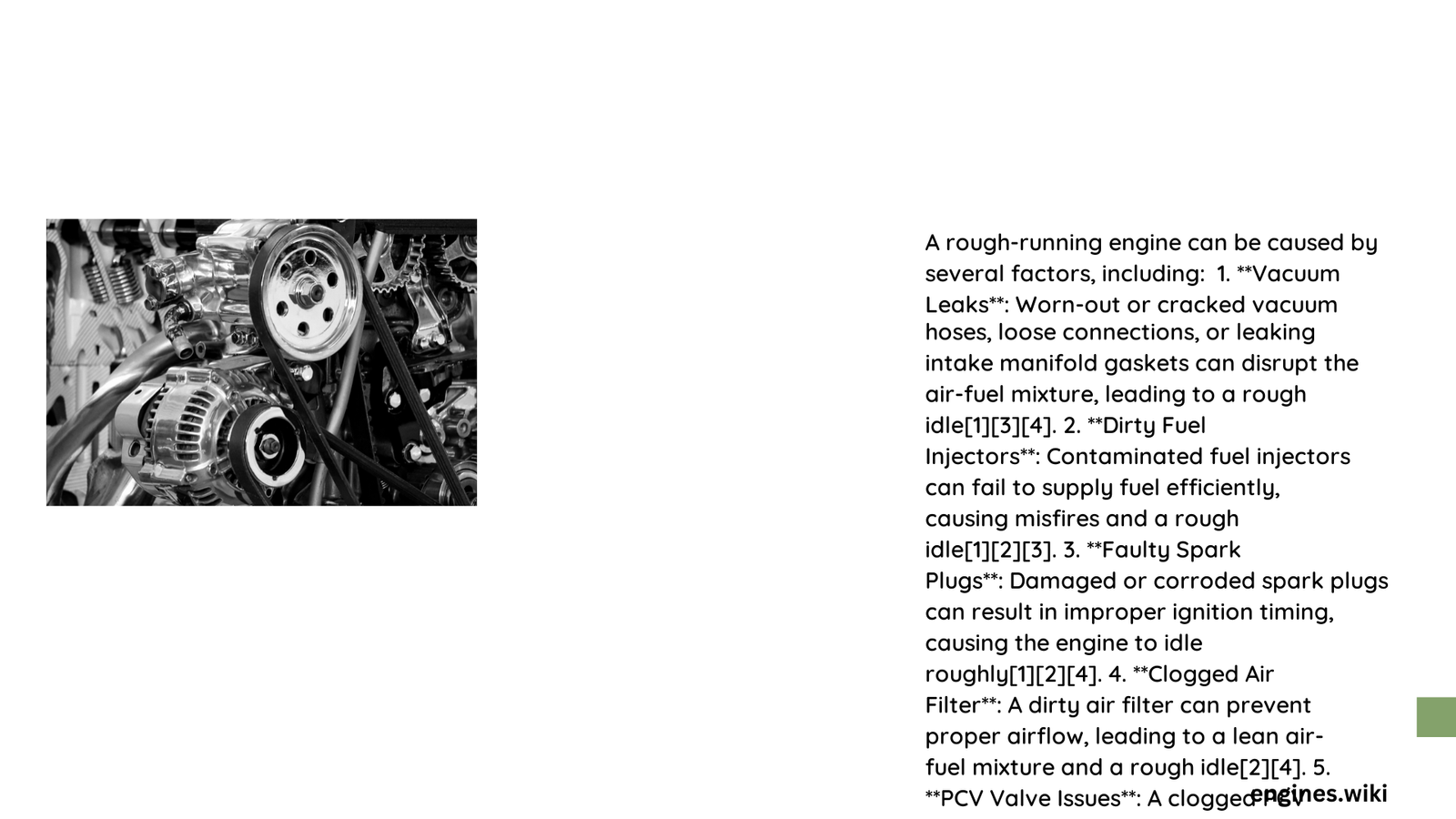When your engine runs rough, it’s more than just an annoyance—it’s a critical signal that something is wrong with your vehicle’s complex mechanical system. Rough engine performance can stem from multiple interconnected issues, ranging from fuel system problems to electrical component failures. Understanding these potential causes is crucial for maintaining your vehicle’s health, preventing costly repairs, and ensuring optimal driving experience.
What Causes an Engine to Run Rough?
Why Do Fuel Injectors Cause Performance Problems?
Fuel injectors play a critical role in your engine’s performance. When they become dirty or clogged, they disrupt the precise fuel delivery mechanism, leading to significant performance issues.
Key Symptoms of Fuel Injector Problems
- Inconsistent engine idling
- Reduced fuel efficiency
- Unexpected engine misfires
- Difficulty starting the vehicle
| Injector Condition | Performance Impact | Recommended Action |
|---|---|---|
| Slightly Dirty | 10-15% Efficiency Loss | Use Fuel Additive |
| Moderately Clogged | 20-30% Performance Reduction | Professional Cleaning |
| Severely Blocked | 40-50% Power Decrease | Complete Replacement |
How Can Spark Plugs Affect Engine Smoothness?
Spark plugs are the unsung heroes of engine performance. When they degrade, your entire engine’s rhythm becomes disrupted.
Diagnostic Indicators of Spark Plug Issues
- Rough idling
- Decreased acceleration
- Higher fuel consumption
- Occasional engine stalling
What Role Do Air Filters Play in Engine Performance?
A clogged air filter can significantly impact your engine’s ability to breathe and perform efficiently. Regular maintenance is key to preventing performance degradation.
Air Filter Inspection Checklist
- Visual debris accumulation
- Reduced airflow
- Dark or discolored filter material
- Visible tears or damage
How to Diagnose Vacuum Leaks?
Vacuum leaks can create unpredictable engine behavior, causing rough running conditions that are challenging to diagnose.
Vacuum Leak Detection Methods
- Listen for hissing sounds
- Use smoke testing
- Check for visible hose damage
- Perform pressure tests
Comprehensive Diagnostic Steps

What Should You Check First?
- Scan for error codes using an OBD-II scanner
- Perform visual inspection of key components
- Check fluid levels and conditions
- Test electrical connections
When Should You Seek Professional Help?
While many issues can be diagnosed at home, complex problems require professional expertise. Consider professional diagnosis if:
– Multiple symptoms persist
– Error codes are complex
– You lack specialized diagnostic tools
– Performance issues worsen rapidly
Maintenance Tips to Prevent Rough Running
- Replace spark plugs at recommended intervals
- Use high-quality fuel
- Perform regular air and fuel filter replacements
- Keep up with scheduled maintenance
Cost Considerations
| Repair Type | Estimated Cost Range | Complexity |
|---|---|---|
| Spark Plug Replacement | $50 – $250 | Low |
| Fuel Injector Cleaning | $100 – $350 | Medium |
| Complete Diagnostic | $80 – $200 | Low |
| Major Component Replacement | $500 – $2000 | High |
Final Recommendations
Addressing rough engine performance requires systematic diagnosis, patience, and sometimes professional intervention. By understanding potential causes and maintaining a proactive approach, you can ensure your vehicle remains reliable and efficient.
Pro Tip
Always document your vehicle’s symptoms and any diagnostic steps taken. This information can be invaluable for mechanics and help track the progression of potential issues.
